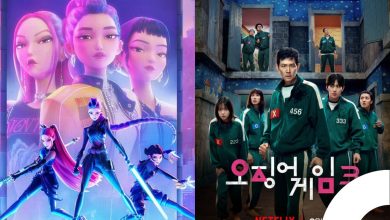
Returning on the occasion of its 10th anniversary, “Interstellar” immediately cemented its place as one of the highest-grossing IMAX releases in history. The colossal pull of “Interstellar” truly rivals the Gargantua black hole that Cooper and his team risked everything to explore, as its timeless questions continue to twist the minds of audiences via a meticulously crafted script that doesn’t waste a single second.
In fact, even on a second watch, director Nolan’s masterpiece still remains full of surprises. This film not only invites us to expand our understanding of time through complex hypotheses, but also turns time into a finite resource as humanity’s civilization on Earth teeters on the brink of collapse.

In “Interstellar”, everything begins with a man named Cooper—a former pilot, astronaut, and engineer for NASA—who is now wasting his talents working as a farmer. The reason is that by 2067, Earth is no longer a hospitable place for humanity. Relentless dust storms, extreme weather, and rampant diseases devastate crops, making food increasingly scarce.
To address this crisis, the government disbanded the military, NASA, and numerous other critical organizations. Now, all resources are directed solely toward agriculture, prioritizing immediate survival. However, increasing food production is only a temporary solution. In just a few years, even corn—the last remaining viable crop—will succumb to the harsh climate and relentless diseases. When that happens, humanity faces the grim prospect of joining the dinosaurs in extinction.
Amid this despair, a strange event occurs. Murph, Cooper’s daughter, notices books inexplicably falling from her bookshelf without any apparent cause. At first, Cooper thinks his daughter is imagining things. But thanks to a layer of dust, he discovers a mysterious gravitational force in the room and realizes the bookshelf is sending an encoded binary message.

Decoding the puzzle leads them to coordinates, where Cooper and Murph find a secret facility belonging to a re-established NASA. There, they learn about an ambitious plan that desperately needs a skilled pilot like Cooper. Eager to pilot a spacecraft once again, Cooper faces a heart-wrenching decision: stay on Earth to care for Murph or venture into the darkness of space to find a new home for humanity.
Throughout the film, the pressure of time looms over every character, driving conflict and forcing difficult choices. It raises a profound question: between the present and the future, which is more important, and how much is a person willing to sacrifice in order to retain their more important option?

Through the opening scene where Cooper attends a parent-teacher meeting for his daughter, it can be seen that most people believe the present is what matters most. This is evident in the U.S. government’s decision to revise textbooks, denying the Apollo 11 mission and Neil Armstrong’s first steps on the moon. Instead, they claim it was merely a propaganda stunt to force the Soviet Union into wasting resources on futile machines.
However, this move was essentially a way to suppress humanity’s dreams, particularly those of scientists like Cooper. Indeed, for those in power, food security is the top priority, and farming is deemed the most essential profession. Earth needs to be fed today to see tomorrow before humanity can look up at the stars and dream again. It’s a logical argument, and the teachers at Murph’s school represent those who cling to the importance of the present, even if it means stifling the creativity of future generations.

On the other side of the spectrum, we have Cooper, Dr. Brand, and the scientists at the new NASA. They believe that mere survival is a waste of life. According to them, human civilization has advanced to this point thanks to trailblazers who dared to step into the unknown and seek out what lies beyond. Great discoveries and groundbreaking inventions are born from courage and imagination. As per Cooper’s word – “Mankind was born on Earth. It was never meant to die here”. To him, the future is what humanity should set its sights on—not just the ground beneath their feet.
Through the narration, we learn that before Cooper, 12 astronauts had already risked their lives exploring 12 unknown planets in search of a new home for humanity. With three positive signals corresponding to three potential planets, it’s now the protagonist’s turn to carry the torch. This isn’t a short-term voyage. Each time they land on a planet, the effects of time dilation mean that the age difference between Cooper and Murph will grow significantly. An hour on a distant planet for Cooper could cost decades on Earth, and by the time he returns, he and Murph might be the same age.
Cooper’s farewell to his daughter is heart-wrenching for every viewer. Yet, he chooses to leave, sacrificing his family’s current happiness so that his daughter won’t just see tomorrow but also witness a promising new era. Metaphorically, both Cooper and the people of Earth have chosen what they believe to be most important and accepted the price they must pay for it. Crossing through a wormhole that bends space, the lives of father and daughter are now separated by an unbridgeable gulf.

Initially, Cooper’s ideals seem overwhelmingly righteous, and we are almost immediately convinced that the treacherous path he takes is the right one. The scientists represent the greater good, and this is humanity’s next great exploration. However, Cooper’s faith is shattered when, in the film’s second act, it’s revealed that the plan to build a spaceship to save Earth’s population was a lie all along.
In truth, the mission for Cooper’s crew was to find a suitable planet for the 5,000 frozen embryos already aboard the ship, intended to build a brand-new civilization. Indeed, the Endurance spacecraft is humanity’s Noah’s Ark, while the people left behind on Earth are the tail that the celestial dragon sacrifices.
At this point, both the audience and Cooper come to realize the darker side of sacrificing the present for the future, as it doesn’t just cost Cooper the time he could have spent with his family—it takes away their very lives and the moral values that define what it means to be human. Everything is left behind to prioritize the mission of preserving the species. By abandoning hope on their home planet, NASA, led by Dr. John Brand, makes decisions that verge on extremism.

This is further exemplified through another character, Dr. Mann, played by Matt Damon. Having traveled through the wormhole before Cooper’s team, Mann is repeatedly referred to as a brilliant individual who inspired others to follow in his footsteps.With no family on Earth and no ties holding him back, Mann was fully committed to the mission of advancing a new civilization. For a scientist, this makes him an ideal figure—logical enough to make tough decisions.
However, despite his cold rationality, the necessity of the mission cannot be denied. As Brand puts it, is nature cruel when a lion tears apart a gazelle? The scientists are simply pursuing what they believe to be the only solution. With that belief, Mann abandons ethics, morality, and judgment, convinced that the future is all that matters. Yet, ironically and bitterly, Mann ultimately proves to be the one most afraid of death, betraying his lofty words. Upon realizing that the planet he landed on was nothing but barren rock and freezing snow, he gave up, falsified data, and sent out a distress signal to summon a rescue team.
On the other hand, people like Brand and Cooper—those who carry the weight of the past, counting every second in their desperate bid to return home—ultimately prove to be the ones willing to sacrifice their lives. By becoming the driving force that propels Brand to the planet most likely to sustain life, Cooper throws himself into the immense black hole Gargantua.

It is admirable how director Christopher Nolan transforms what starts as a grand space exploration into a deeply personal journey of one man finding his way back home, where the burden of the past transforms into fuel for hope. Stepping into the future, with love in his heart, it is Murph’s presence that gives Cooper the strength Mann never had.
In the infinite void of the black hole, the final layers of pretense are stripped away. Cooper falls into a five-dimensional space constructed from the seconds and moments he and Murph shared in her little room years ago. Armed with data about the black hole’s singularity, it is strangely poetic that the key to humanity’s future lies in the old memories. Encoding the unknown information into the ticking of the watch he gave his daughter, Cooper bridges the gap between past and future.

The path to saving humanity prompts deep reflection on the question of the present versus the future. What holds us back? What propels us forward? If we were like the majority of people on Earth, humanity might collectively march toward extinction. But, if we went all-in on the escape plan—carrying 5,000 frozen embryos while abandoning ethics and morality—would we lose part of our humanity, the very thing that defines us?
For scientists like Mann, cutting ties with the past and present led to their transformation into something unrecognizable, resulting in actions they could not forgive even themselves for. Meanwhile, people like Tom, Cooper’s eldest son, and the other farmers, were so fixated on immediate survival—securing their next meal—that they gave up hope of a salvaged future. Even Tom, the first son who was often dismissed as less intelligent than his sister, proves to be more than he seems upon a second watch.

Trapped in the past, he would rather die on land littered with corpses than live a subterranean life in NASA’s bunkers. Despite the dust storm damaging the lungs of both his wife and child, Tom stubbornly chose to stay in the house his father left to him. Rigid, yet not entirely unsympathetic, Tom is a man consumed by despair. Meanwhile, Cooper and Murph—two individuals representing both intellect and love—treasured their memories of each other and never lost hope in the future, though they both endured the loss of their present.
Cooper had to leave to retrieve the data from the black hole, and Murph had to keep learning to solve the gravity equation. Separation was the only way they could save each other. Then, when the father and daughter were finally reunited, Murph was nearing the end of her life. The past forms the foundation of the present, the present builds the future, and the achievements of tomorrow only hold meaning when driven by love and the desire to protect those who matter.

Much like the five-dimensional space at the end of the film, time in “Interstellar” twists and folds in complex ways, leaving us with questions—or perhaps answers. No character’s ideology is entirely correct, nor is any antagonist entirely wrong; everyone is tormented by the passage of time. The scene of Cooper crying in the cabin of the space station remains an iconic moment, a haunting reminder of the harshness of choices and the moments we sacrifice for ideals that can never be reclaimed.
Science, ghosts, love, and the pursuit of answers to humanity’s limits—all coexist in “Interstellar”. Beyond the theme of time, another duality is embedded in the film: the way individuals like Mann, Cooper, Brand, and Murph perceive science. For Mann, numbers are absolute, and the immutable laws of physics—proven over centuries—define everything. Mann, alongside the senior scientist Professor John Brand, concluded that humanity was beyond saving, prompting them to commit to a plan of launching 5,000 frozen embryos into space to rebuild civilization.In contrast, the belief of Cooper, Brand, and Murph, not necessarily proven to be right or wrong, is encapsulated in this line, “You said science was about admitting what we don’t know”. For Murph, the equation wasn’t unsolvable—it was just not yet solved.

This difference in perspective is the crux of the film: one side believes there are limits humanity cannot surpass, while the other holds a steadfast faith that the answer is already there, simply waiting for us to discover it. Ultimately, “Interstellar”, by celebrating Murph’s accomplishment, affirms director Nolan’s belief that humanity will always find a way to overcome the constraints binding us.
Take a closer look at how the film begins. Despite being a work deeply rooted in scientific theory, the first 10 minutes prominently feature the mention of a ghost—the one responsible for knocking books off Murph’s shelf.

Of course, ghosts are certainly not a concept beloved by scientists, and even Cooper initially dismisses the idea of a supernatural entity. But later, we come to understand that the “ghost” is none other than Cooper himself, aided by the five-dimensional space enabling him to influence the past. So, it’s not that the ghost didn’t exist—it’s that at the start of the film, we couldn’t yet explain its existence. Murph’s belief in the ghost serves as a cleverly planted foreshadowing detail. By the end, despite the fact that no one else believes there’s a solution to the gravitational equation, her hope remains unshaken.
And Nolan goes even further, introducing hypotheses about something that has puzzled humanity for thousands of years—something even more mysterious than the ghost: love.
This idea is vividly illustrated in a conversation between Dr. Brand and Cooper as the team deliberates which planet to land on. Due to limited fuel and the effects of time dilation, choosing the wrong planet could waste decades. While Cooper is adamant about trusting the signal sent by Mann from his planet, Brand hesitates and argues in favor of Edmunds’ planet, named after the astronaut who sacrificed himself exploring it—and the man Brand was in love with. The female scientist admits that her decision is, in part, influenced by her desire to see Edmunds again. Naturally, this is seen as an emotional and unscientific choice. However, Brand’s arguments that follow contain what is perhaps the most memorable dialogue in “Interstellar”.

As Cooper explains, love serves as a social function, helping to bond individuals and ensure the survival and upbringing of offspring.But Brand counters this by rejecting the purely functional view of love, arguing that the love we feel for someone, even when they’re no longer alive, serves no social function. On the contrary, the fact that two people separated by billions of light-years can still feel love for one another proves that love is the one thing we can perceive that transcends both space and time. This sounds irrational, but much like the ghost, it’s something that simply cannot yet be explained.
And here lies the ultimate irony. At the end of all three journeys, it is Edmunds’ planet that turns out to be the only one suitable for human habitation. Of course, this could be chalked up to luck or coincidence, but it’s hard to deny that this time, Brand’s heart pointed in the right direction.
All of the dialogue above serves as a prelude to the final scene. Inside the Gargantua black hole, the only way Cooper can send quantum data back to Murph is through love. It turns out that the beings from the future—or the force that placed the wormhole near Saturn to help humanity—cannot directly communicate with humanity. Thus, they chose the father-daughter duo, believing that the bond between them was strong enough to bridge the limits of space and time.

In the five-dimensional space, where time exists as a physical dimension, love, too, becomes something that can be quantified. This is because in the endless expanse of memories, the father follows his intuition to find the pivotal moment. On the other side, once again, it is instinct, love, longing—or whatever name this connection can be deemed —that leads Murph back to the old room and compels her to pick up the watch.
Just as gravity can transcend time, so can love. By encoding the Morse code into the watch’s hand, Cooper sends humanity’s lifeline and his infinite love for his daughter across the universe. Perhaps love truly is humanity’s unique mode of communication, capable of piercing through the immense gravitational pull of a black hole. In the end, “Interstellar” doesn’t insist that this is a real claim, but rather to ask whether it’s possible.

As one the greatest science fiction works of all time, “Interstellar” is celebrated for its scientific accuracy. However, the movie is also one that centers on dreams, which have always been the driving force pulling civilization past its limits.
Just like the Dylan Thomas poem that Dr. Brand recited like a prayer before the team heads into space, “Interstellar” reminds viewers that even if the darkness feels tranquil, even if the future seems uncertain, and death appears inevitable, it’s necessary to always cling to life and hold on to hope—just like how Cooper, Brand, and Murph never stopped believing in a way out for humanity.





